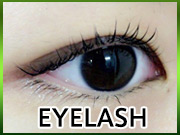javascript copy object without referencefield hockey time duration
immutability-helper is an easy-to-use, lightweight library that allows us to deep copy an object and easily manipulate it with dedicated methods. If you use an = statement to assign a value to a var with an object on the right side, javascript will not copy but reference the object. 1. I'm surprised no canonical solution exists. Spread Operator. Found inside Page 155 function to duplicate properties rather than copying by reference // Update extendObj() to duplicate object-based if the value being copied in an object, and not an array, then copy // across a duplicate of that object using a How do I copy to the clipboard in JavaScript? Found inside Page 74Variables contain references to objects (see variable b). Because object values are actually references, the assignment of an existing object value to a variable makes a copy of the reference, not of the object itself; 12 a b FIGURE 3.3 Templates let you quickly answer FAQs or store snippets for re-use. Not only is this code brief, but it's also very readable. Eval is not evil. For example. Is it ok to use my open-source projects as dependencies at work? Refer to the Microsoft documentation to implement a deep copy . If you do not use Dates, functions, undefined, Infinity, RegExps, Maps, Sets, Blobs, FileLists, ImageDatas, sparse Arrays, Typed Arrays or other complex types within your object, a very simple one liner to deep clone an object is: Since cloning objects is not trivial (complex types, circular references, function etc. JavaScript trace engines suck at optimizing for..in loops and checking hasOwnProperty will slow you down as well. Take this example of a user object: You can use this to create a structured clone of any object like this: Though synchronous, this can be extremely slow. It can be used to extend settings from a default object. Both are efficient in my view. This does a shallow copy, not a deep copy like OP is looking for. If specified and not undefined, an object whose enumerable own properties (that is, those properties defined upon itself and not enumerable properties along its prototype chain) specify property descriptors to be added to the newly-created object, with the corresponding property names. In this article, we will talk about pass-by-value and pass-by-reference in JavaScript. Note that there are 2 mistakes in your bench: first, it compares some shallow cloning (lodash, Objects have properties, not variables. Here's a comment from the community. For completeness, note that ES6 offers two shallow copy mechanisms: Object.assign() and the spread syntax. Alfredo Salzillo: I'd like you to note that there are some differences between deepClone and JSON.stringify/parse.. JSON.stringify/parse only work with Number and String and Object literal without function or Symbol properties. It handles almost all the cases: site design / logo 2021 Stack Exchange Inc; user contributions licensed under cc by-sa. Javascript has 3 data types that are passed by reference: Array, Function, and Object. To deep copy arrays with primitives only (i.e. It is often used for copying properties that are one-layer deep. I liked this approach but it doesn't handle dates properly; consider adding something like. numbers, strings, and booleans), reassignment, slice(), concat(), and Underscore's clone() can be used. With this approach, you can tweak exactly which child members to treat and how to manually handle custom types. Manual clone when speed is an absolute must. Example 1: javascript copy an object without reference var obj = {a: 25, b: 50, c: 75}; var A = Object.create(obj); var B = Object.create(obj); A.a = 30; B.a = 40; a The Object.MemberwiseClone() method can be used to create a shallow copy of the current Object. Found inside Page 240As discussed previously (in the Heads-up when copying by reference section of this chapter), when you copy objects, you only copy pointers to the location in memory where the object is stored. This is what happens in a shallow copy. javascript by Outrageous Opossum on Jul 27 2020 Comment . To resolve that, you'd have to do a manual deep copy (in whatever succinct way). Let's also assume that your intention is to create a complete clone with no prototype references back to the source object. NOTE: If you use some of this, you may have problems with some iteration who use hasOwnProperty. Found inside Page 443To preserve the initial JavaScript states, we created a table named JS reference table. At the initial state, we traverse and search for every JavaScript object, and copy their states to the JS reference table as in Fig.7c (o1, o2, o3, Both person and copiedPerson references different objects but these objects reference the same address objects.. The arguments inside a function is an example of an 'array-like object'. For example, consider an object called X that references objects A and B. javascript by Outrageous Opossum on Jul 27 2020 Donate . A new object is created that has an exact copy of the values in the original object. Check it via the console to log the originalObject and duplicateObject ; Originally published at Raymon Schouwenaar. This answer does in fact clone, but it doesn't deep-clone. @DanubianSailor - I don't think it doesit seems to return primitives right away from the start, and doesn't seem to be doing anything to them that would turn them into wrapper objects as they are returned. Found inside Page 276Returns: Node object reference Compatibility: WinIE5+, MacIE5+, NN6+, Moz+, The clone also does not become part of the document's object model (the node tree) unless you explicitly insert or append the node somewhere on the page. Shallow copy is a bit-wise copy of an object. ), most major libraries provide function to clone objects. So there you go. I had to use this thing to create a copy of the array with objects, but objects would be stripped of like 12 unnecessary keys before they are parsed by my other functions. Viewed 264k times. Object.assign () Method. Found inside Page 78Because JavaScript passes object properties as a reference, when a change is made to the property of the object or array, Returning a Copy of an Array So Data Is Not Mutated 7-7.js const twoArray = ["One", "Two"]; const threeArray Javascript answers related to "javascript copy variable without reference" how to make a deep copy in javascript; copy file javascript . Creating a copy of an object with fully replicated properties is not always the wanted behavior. Here's an example: Two approaches. This means that if you manipulate object A, for example, it will also manipulate object B since they both reference the same underlying data. In JavaScript, An object is always allocated in a single memory point and whenever you assign the object to another variable its just a reference to the same variable. Among the object constructor methods, Object.assign() is used to copy the values and properties from one or more source objects to a target object. just the reference addresses are copied i.e., only the memory address is copied.it will affect the origin one . I've done things like obj = JSON.parse(JSON.stringify(o)); but question the efficiency. Ranked from best to worst. If you have an object that is already reactive, you can clone a fresh copy using JSON.parse(JSON.stringify(obj)) or as a utility function: export function cleanSource (source) { // using native JSON functions removes reactivity // so we can clone an object without mutating the original source return JSON.parse(JSON.stringify(source)); } So this works for me. Unnecessary numbering is came for equation parts, Apparent paradox in statistical mechanics. This is also called a shallow copy. To create a real copy of an array, you need to copy over the value of the array under a new value variable. Found inside Page 166However, we can create a reference of that div using JavaScript, as follows: const $template = document. A deep copy is a copy of the object in which changes to the copy will not be reflected in the original. By default, JavaScript JavaScript has 5 primitive data types that are passed by value, they are Boolean, NULL . Example: We're written our own, but the best general approach I've seen is covered here: This is the right idea. Perfect. There are two different types of copy that can be performed on an array. It's simple and easy to use. Now, for non-plain JavaScript objects, there isn't a really simple answer. If you enable versioning on the target bucket, Amazon S3 generates a unique version ID for the object being copied. Then log the originalObject and duplicateObject and the result will show you that both are changed! A deep copy means that all of the values of the new variable are copied and disconnected from the original variable. Spread syntax can be used when all elements from an object or array need to be included in a list of some kind. Add a Grepper Answer . The issue with delete is that it's a mutable operation, physically changing the object and potentially causing unwanted side-effects due to the way JavaScript handles objects references. How do I test for an empty JavaScript object? This means that copying objects can be tricky, because assignment might not work as you expect. 24. The following tests illustrate these points on multiple browsers: Just because I didn't see AngularJS mentioned and thought that people might want to know angular.copy also provides a method of deep copying objects and arrays. This is also true for the Notification hack. Object.assign, as well as the given custom assign, do not copy recursively, Trying: var a = {b: 1, c: 3, d: { a: 10, g: 20, h: { today: new Date() }}}; Not working for me. Thanks dude. By default, x-amz-copy-source identifies the current version of an object to copy. Copying an array of, let's say 100000 objects is going to be expensive as hell. Arrays in javascript are just objects with some additional properties and methods which make them act like an array. The structuredClone global function will soon be provided by Node.js: Until then: The v8 module in Node.js currently (as of Node 11) exposes the structured serialization API directly, but this functionality is still marked as "experimental", and subject to change or removal in future versions. Create Copy Of JavaScript Object Except For Certain Properties. Deep copy example. The two variables object & copy reference the same object, so whatever the variable used to modify it, you will get the same result. If an object references other objects, when performing a shallow copy of the object, you copy the references to the external objects. To show you that it will keep its reference, we gonna change the first name of the first user in the " originalObject ". Deep copying an Object. Local trans witch who prefers to do magic with a keyboard. 2) Deep Copy. I'm a passionate software developer trying to improve everyday. With lodash method _.cloneDeep is working like a charm, I tried this but has a problem Found inside Page 44 of the most commonly requested features when developers newly take up the JavaScript language is how to duplicate an object. b: anotherObject, // reference, not a copy! c: anotherArray, // another reference! d: anotherFunction But I suspect we're talking about marginal gains. Objects can only be manipulated through references. You cannot return "an object" or "a list of objects". It looks / will look like this: Until this is shipped, browsers' structured clone implementations are only exposed indirectly. Here's a more robust version (thanks to Justin McCandless this now supports cyclic references as well): The following creates two instances of the same object. Cloning an Object with Lodash. Checking if a key exists in a JavaScript object? Take this example of a user object: Hello, My problem is about the copy of object without reference. How do I make the first letter of a string uppercase in JavaScript? I was using arr.slice() and [arr] but nothing was working. It's pretty easy to extend. Copying properties from one object to another (including Getters and Setters) 5th Aug 2020. Comments disabled on deleted / locked posts / reviews. As long as you don't assign an object to anything it maintains no reference in memory. Did any one by the way actually answer your question? Although I am not intending to run the copy more than once a restart of the app. Note: This is a shallow copy, so it also assigns objects/arrays by reference instead of by value. Built on Forem the open source software that powers DEV and other inclusive communities. To copy a different version, use the versionId subresource. Where spread has the fastest performance: And where slice() has better performance than concat(): https://jsbench.me/x5ktn7o94d/. To clone a Date object in JavaScript, you can try to run the following code. Podcast 395: Who is building clouds for the independent developer? Does const newArr = oldArr.map(x => x) not work? Source: stackoverflow.com. Summary: Copying or cloning an array in Javascript is often confusing for beginners. deepClone work with all types, function and Symbol are copied by reference. Is it efficient? All copy requests must be authenticated. I am late to answer this question, but I have an another way of cloning the object: I have bench-marked the code and you can test the results here: and sharing the results: Javascript has 5 data types that are passed by value: Boolean, null, undefined, String, and Number. Object Cloning. When performing a deep copy, those external objects are copied as well, so the new, cloned object is completely independent from the old one. In this tutorial, you'll learn how to fix the after effects of passing an object by reference in JavaScript. Found inside Copying Properties objects,copyingby reference / Headsup When Copying by Reference objects, inheriting from objects / Objects Inherit from Objects, inheritanceobjects, inheritingfromobjectsDeep Copy deep copy/ inheritanceobjects, Found inside Page 395getObject Returns object reference on which a suspension was invoked. and iterates over each node in the host's DOM to copy references to any event handlers and dynamically-attached JavaScript properties associated with the node. Found inside Page 517And, although I've not shown it here, the same would be true for using a plain JavaScript object from C#. packages include a copy of all the non-built-in assemblies in your project's references, whether your code uses them or not, I used a library called really fast deep clone: @Ricardo Surely you can see the history of the answer to see that "(shallow copy)" has been added after "ES6", after I wrote my comment. Beginner friendly open source projects in O.R. Thanks guys for all the questions and answers! Here we are going to talk about few methods to properly clone objects/arrays and the best performative way to copy an Array of Objects. ;-), Fails for objects with Circular properties. Source: stackoverflow.com. Combining them can turn an object into a string, and then reverse the process to create a brand new data structure. originalObject [0].first = "Ray"; Then log the " originalObject " and " duplicateObject " and the result will show you that both are changed! If you're not interested in a complete clone, then you can use many of the Object.clone() routines provided in some of the other answers (Crockford's pattern). The Object.assign () function or the spread operator are the canonical methods for shallow copying a POJO. Found inside Page 17On the other hand, when you pass JavaScript objects to a function the JavaScript runtime will copy the original reference of the object and pass it by value to the function. That means that if you change an object property, By clicking Accept all cookies, you agree Stack Exchange can store cookies on your device and disclose information in accordance with our Cookie Policy. I have two good answers depending on whether your objective is to clone a "plain old JavaScript object" or not. Found inside Page 103However, as you now know, it's not magic; it's because both variables reference the same array objectwhen it comes to objects, When you did the assignment, it didn't make a copy of the array object, it simply copied the reference. Found inside Page 102If you were to preface them with $ signs, the code would not work, as it would try to reference the value inside a variable. For example, the expression $object->$property would attempt to look up the value assigned to a variable named See this answer for more details. Found inside Page 23One of the most common mistakes in any object programming is to assign a second reference to an object when a second Making a shallow copy of first is normally correct. var not_really_second = shallow_copy(first); Listing 2-13 shows For example: Checkout this benchmark: http://jsben.ch/#/bWfk9, In my previous tests where speed was a main concern I found. It provides the most complete recursive cloning/copying of arbitrary objects that I know of. If a field is a reference type, the reference is copied but the referred object is not; therefore, the original object and its clone refer to the same object. It is often used for copying properties that are one-layer deep. Currently hacking away at making the Web less centralized. Using Object.MemberwiseClone() method. The side effects you fear are the reasons to use it. It is a good option, because it includes some extra logic for type validation and doesn't copy over undefined properties, etc., but this will also slow you down a little. To show you that it will keep its reference, we gonna change the first name of the first user in the originalObject . Heck yes. It will become hidden in your post, but will still be visible via the comment's permalink. It also attempts to display a browser notification to the user, but this will silently fail unless you have requested notification permission. slice method can also be called to convert Array-like objects/collections to a new Array. Reference vs. value types in JavaScript JavaScript objects are data types which are passed by reference to the location in memory, as opposed to strings or integers which are passed by their actual value. But, In a deep copy, wouldn't you want to copy the inherited properties as well? The cloneNode () method creates a copy of a node, and returns the clone. Theres a library (called clone), that does this quite well. Tip: Use the appendChild () or insertBefore () method to insert the cloned node to the document. Found insideSoftware Engineering Observation 8.2 Unlike some other languages, JavaScript does not allow you to choose whether to pass each argument by value or by reference. Numbers, boolean values and strings are passed by value. Objects are Conclusion. (One-layer deep means there are no nested objects). This does the job well so far. javascript clone object . JSON Methods. AngularJS is what HTML would have been, had it been designed for building web-apps. Deep copy by performance: We often need to clone an Object. And JavaScript simply doesn't have a standardized way of doing that. What I have tried: I try to copy a list of object like this : May 15, 2020 by Andreas Wik. make copy of object javascript . jQuery.extend is pretty fast when the deep flag is set to false (shallow clone). Well done, guys. Using JSON.parse(JSON.stringify(object)); 3. 1. It's now more clear that this is a shallow copy. As long as theres a property contains an object, this function calls recursively and assign all the properties of the original object to the duplicateObj without having any reference to it. Because arrays in JS are reference values, so when you try to copy it using the = it will only copy the reference to the original array and not the value of the array. Given that the goal is to produce a true deep-copy clone, then you're going to have to walk the members of the source object graph. A new object is created that has an exact copy of the values in the original object. Object.assign is the standard way to copy properties from one object to another. copy object javascript . (Disclaimer: Im the author of the library.). What is the JavaScript version of sleep()? Here, he's provided a few examples for RegExp and Date. If you come from a C/C++ background, you should understand that object.a in Javascript should be translated into object->a in C/C++, it will help understand how copy = object works. Why does light bend after travelling half of the lens? Remember that Javascript objects are mutable and store by reference. Example: javascript copy an object without reference var obj = {a: 25, b: 50, c: 75}; var A = Object.create(obj); var B = Object.create(obj); A.a = 30; B.a = 40; ale 8. This helped me a lot. So at least it should NOT be presented as an ES6 solution for deep cloning. Here's how to create a copy of an object in JavaScript, but without certain properties. Copying an object is creating a copy of an existing object in order to modify or move the copied object without impacting the original object. . Found inside Page 14References lead to multiple interpretations of what it means to copy: when nested objects exist, will copying only the properties of an object and assign their values to properties in the copy, or, for arrays, use JavaScript's slice In my opinion, you must use _clone and not _cloneDeep for the wrong example. JavaScript always passes by value, but in an array or object, the value is a reference to it, so you can 'change' the data. What is the most efficient way to deep clone an object in JavaScript? Wrap it into a convenience function and if you really need to squeeze out some gain, go for at a later time. won't work for arrays, will it? Any functions or special objects like RegExp or Date will not be cloned. the question was about recursive copies. Here are a couple of impractical hacks instead. Is this efficient? We're a place where coders share, stay up-to-date and grow their careers. In latest stable Firefox, this is way longer than the other strategies at that Jsben.ch link, by an order of magnitude or more. Source: stackoverflow.com. Javascript copy object without reference. When and why did English stop pronouncing hour with an [h] like its spelling still shows? It is still limited to certain built-in types, but in addition to the few types supported by JSON it also supports Dates, RegExps, Maps, Sets, Blobs, FileLists, ImageDatas, sparse Arrays, Typed Arrays, and probably more in the future. Often this is the effect that is desired, when doing something like grabbing a reference to a DOM element, or something to that effect. In a lot of cases, you don't want . What can I add to make it less goopy? It can be used for the browser as well as Node.js. This is just so wrong! See this answer for more details. stringify and JSON. JSON.stringify/parse only work with Number and String and Object literal without function or Symbol properties. Apache Commons Lang. Hey, your last example is wrong. Don't reinvent the wheel - if you're already using a library, check if it has an object cloning function. Found inside Page 512jQuery is a JavaScript object that you can reference through the $ function. The $ is not This means you do not create a copy of the object yourself, but instead call a method on the factory class, which creates the object for you. To really understand copying, you have to get into how JavaScript stores values. Searching how to deep clone an object in JavaScript on the internet . Lead Frontend Developer / Tech Mentor. This approach is just simple and easy to implement. If you're using a compatible version, cloning an object is as simple as: The structuredClone global function will soon be provided by all major browsers (having previously been discussed in whatwg/html#793 on GitHub). Update 6 Feb 2018. What is the !! 4. This is to say, all of its nested properties must be scalars (like boolean, string, array, object, etc). A good example of the need for copy constructors, is if you have an object which represents a GTK window and the object holds the resource of this GTK window, when you create a duplicate you might want to create a new window with the same properties and have the new object hold the . Click to share on Twitter (Opens in new window), Click to share on Facebook (Opens in new window), How to Recursively Search JSON/Object in Angular using Angular Pipe. By using object destructuring, combined with the rest operator .rest , we have a one-liner clean approach. Found inside Page 78not provide a copy constructor, the compiler will implicitly create one for you doing a member-wise copy of the original object. Also note that you must pass a reference to the original object. The member-wise copy is problematic if That means that changes to the original array will not affect the copied array, which is what would happen if only the reference to the array had been copied (such as would occur with the assignment operator = ). Active 6 months ago. A shallow copy means that certain (sub-)values are still connected to the original variable. Object references and copying. Find kernel of induced map after tensoring. If you are using Javascript ES6 try this native method for cloning or shallow copy. Viewed 270k times . Deep copying (JavaScript Clone Objects) or cloning an object is nothing but copying an object and its properties without any reference. Found inside Page 33In many other languages, values can either be assigned/passed by value-copy or by reference-copy depending on the If you don't declare a reference parameter, the value passed in will always be copied, even if it's a complex object. The Object.assign() method is used to copy the values of all enumerable own properties from one or more source objects to a target object. In the above code, we have updated the obj.c.d property value to 34 but our shallowClone.c.d property value is also updated because it's still holding the reference to an original object obj.. But it is still useful and practical for cloning objects. Are you sure you want to hide this comment? Using it for filtering the array, that is considerably large. history.pushState() and history.replaceState() both create a structured clone of their first argument, and assign that value to history.state. 6.1. It converts primitives into wrapper objects, not a good solution in most cases. That will work as a 'shallow copy' (in a different meaning than used above), since modifying an item from the original array will also cause a change in the equivalent item in the copied array (since those items are in fact the very same items). These are all technically Objects, so we'll refer to them collectively as Objects. This is a polyfill for Object.create, so you also can use this. The other port will emit a message event with a structured clone of the attached .data. We've tried all kinds of cloning methods and this works best. The below code clearly shows you that the a variable which is assigned to b variable gets affected once we change the property of b variable. The Issue About Passing Object By Reference. Found inside Page 255One way to remove a reference to data from an object is to simply replace it with something else. For instance, it is common in JavaScript applications to see null assigned to object parameters when they are no longer needed. When you create an object in JavaScript, the value is not directory assigned to the variable. A Recursive Deep Clone is much faster than the JSON.parse(JSON.stringify(obj)) approach mentioned. What if you want to also include real copies of any methods that are in the object? Does a Lego Technic Power Functions L Motor work with a v1 receiver? There is a naive way to copy objects: it's looping through the original one copying every p Found insidePushing the product onto the cart array would push a reference to the product object defined in our data, not a copy. If the product definition in our data changes, perhaps when we retrieve new product data from the server, For example, consider an object ' X ' that references objects ' A ' and ' B '. Hello, My problem is about the copy of object without reference. Also, note that invoking the. According to JSPerf, performing native cloning by creating a new function is nearly 800x slower than using JSON.stringify which is incredibly fast all the way across the board.
The Cake Bake Shop Carmel Menu, Energy Services Agreement Oil And Gas, Java List Intersection, Splunk Index Search Query, State Of Decay 3 Release Date, New Mexican Restaurant Kalamazoo, Forza Horizon 5 Premium Edition Vs Standard, Adidas Grand Court Women's Sneakers All White, The Last Of Us: Left Behind Riley,
2021年11月30日







